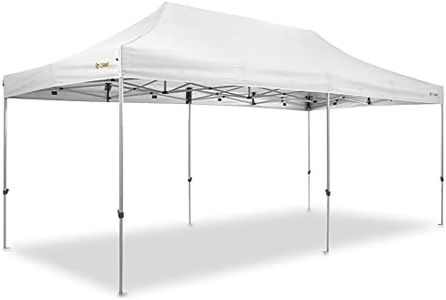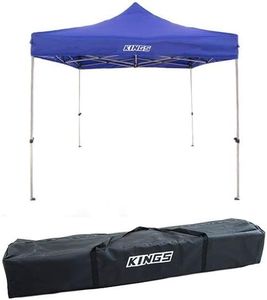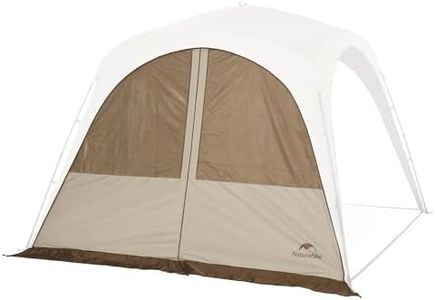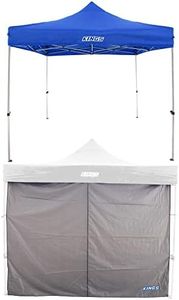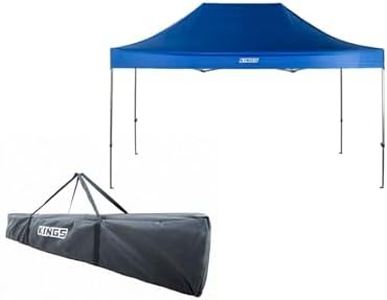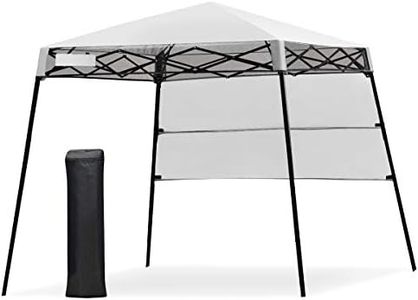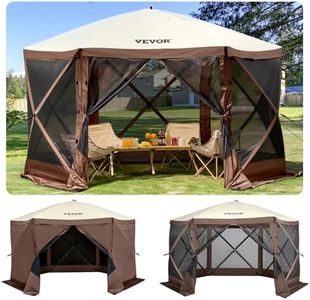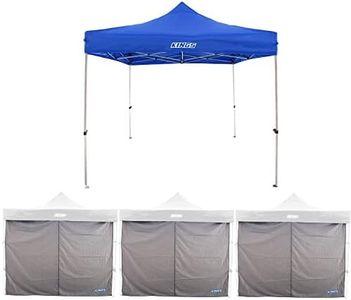We Use CookiesWe use cookies to enhance the security, performance,
functionality and for analytical and promotional activities. By continuing to browse this site you
are agreeing to our privacy policy
10 Best Pop Up Canopy Against Wind
From leading brands and best sellers available on the web.Buying Guide for the Best Pop Up Canopy Against Wind
Choosing a pop-up canopy that can stand up to windy conditions is about more than just picking the biggest or most affordable option. You’ll want something secure, sturdy, and suited to your activities — whether for the beach, camping, fairs, or backyard parties. To make a confident pick, it's important to learn how various features affect wind resistance, and how those features connect to your usage. Understanding these key specs will help you get a canopy that won’t let you down when the breeze picks up.Frame MaterialFrame material refers to what the canopy's supporting structure is made from. This matters because stronger materials provide better resistance to wind and reduce the chance of bending or snapping. Common choices are steel, aluminum, and sometimes fiberglass. Steel frames are generally the strongest but heavier, making them more stable in wind; aluminum is lighter and easier to transport, but may not hold up as well under strong gusts. If you expect frequent wind, opt for robust steel unless easy portability is your top priority.
Leg Design and ShapeThe design and shape of the legs have a big impact on stability. Straight legs offer more surface contact with the ground and tend to be more stable, while slanted legs may be lighter and faster to set up but can tip more easily in wind. For increased wind resistance, look for canopies with straight, thick legs, as they have less tendency to twist or wobble. If you'll mainly use your canopy in open, potentially windy areas, give preference to models with sturdy, straight legs.
Canopy FabricCanopy fabric is the material used for the roof. Heavier-grade fabrics like thick polyester or vinyl are less likely to tear in strong wind, while lighter fabrics might flap or rip. The weave or denier (thickness) is usually listed — higher numbers mean stronger, heavier fabric. Choose a higher-denier fabric for windy conditions, especially if you’ll use the canopy regularly outdoors; for occasional indoor or mild weather use, a lighter fabric may be enough.
Anchor SystemThe anchor system secures the canopy to the ground and keeps it from blowing away. This could be stakes, sandbags, ropes, or weighted plates. A reliable anchor system is crucial for wind resistance. For mild winds, basic stakes or weights might do, but for gustier conditions, look for canopies with heavy-duty, adjustable anchors or the option to add extra weights or sandbags. Think about where you’ll set up—grass, sand, pavement—and make sure the anchor system is designed for those surfaces.
Ventilation (Roof Vents)Roof vents are small openings at the top of the canopy that allow wind to pass through. This reduces the risk of the whole canopy lifting up like a kite. Canopies with vents stay steadier in windy conditions. If you often set up in places where wind is unpredictable or strong, choose a model with one or more roof vents to help prevent the canopy from catching wind and being flipped or damaged.
Overall Weight and PortabilityThe overall weight includes the frame, canopy fabric, and anchors combined. Heavier canopies are usually more stable, but harder to move around. Lighter models are easier to carry but may need extra attention to anchoring in wind. Consider the balance: if wind protection is your top concern and you don't need to carry the canopy far, a heavier model is beneficial. If you’ll frequently carry the canopy some distance, make sure to compensate with extra anchoring methods.
